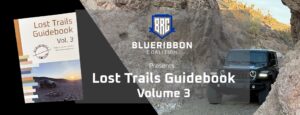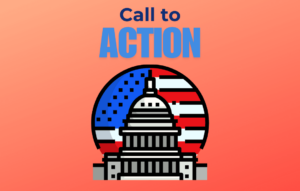Submit your Comments to Limit the Endangered Species Act by Monday May 19
Call to action for all outdoor recreation enthusiasts! The US Fish & Wildlife Service has proposed removing the use of “harm” within the regulatory framework of the Endangered Species Act (ESA). The ESA has long been a primary, preferred tool among anti-public land access groups to close OHV roads, eliminate recreation, and lock-up our public lands to public access. This deregulatory proposal segues with the overturning of the Chevron Doctrine, which determined that federal agencies no longer get to interpret laws as they wish when the laws are vague.
The crux of this ESA proposal is the definition and interpretation of “take” vs. “harm” by federal agencies, as it relates to how the Endangered Species Act is implemented. The ESA prohibits “take” of a species. This is defined as “harass, harm, pursue, hunt, shoot, wound, kill, trap, capture or collect.” The established understanding of “take” when the ESA was created was the capturing, injuring or killing of a wild animal – the ESA prohibited that for endangered species. After the creation of the ESA, however, the U.S. Fish and Wildlife Service (FWS) along with other agencies that became involved in facilitating implementation of the ESA were allowed to create their own interpretations for the individual words in the definition of “take,” like the word “harm.”
Their interpretation extended the word “harm” to include all sorts of things that might harm a species such as allowing 4WD vehicles on certain roads, allowing camping in areas where the species might live, construction activity to build or improve facilities on public lands, using a dozer to maintain a forest road… it became an endless list of actions that could be considered “habitat modification”, and thus “harm”. “Harm” has also been used to limit a long list of outdoor recreation activities like hunting, fishing, rock climbing, and many others as they may be deemed “harmful”, and a violation of the ESA. The interpretation of “harm” has prevented the logging and thinning of our overgrown forests, leaving them prone to catastrophic wildfires.
This proposal seeks to rescind the regulatory definition of “harm” and limit the ESA to the statutory definition of “take”. This is a critical modification that is desperately needed for the ESA to prevent its continued abuse. It will make it incredibly more difficult for politicians and organizations that advocate for closure and restricted access to public lands to weaponize the ESA to achieve their own agenda. As of May 17, over 146,000 comments have been submitted on this proposed rule. It is absolutely critical that we contribute our voices to urge that the definition of “harm” is removed from the ESA!
The public comment period is open until May 19, 2025.
Please submit a comment to the FWS using UPLA’s letter template below
Thank you for joining in to support urgently needed modification of the Endangered Species Act! Together, we can create change that will balance wildlife conservation with human uses of public lands, and improve public land access now and for future generations!
For more information about the proposed rule change, and to submit a comment, go to the Federal Register, docket no. FWS-HQ-ES-2025-0034-0001.
LETTER WRITING CAMPAIGN: REVISE THE ENDANGERED SPECIES ACT
Proposed rule website: https://www.regulations.gov/document/FWS-HQ-ES-2025-0034-0001
Public comment deadline: May 19, 2025
Submit your comment via this link: https://www.regulations.gov/commenton/FWS-HQ-ES-2025-0034-0001
- UPLA’s Natural Resources Consultant, Rose Winn, is tracking comments for this Plan. Please email Rose a copy of your comment letter: rose@utahpla.com.
Key Talking Points:
I enjoy recreating on public lands throughout Utah and the US. Public lands management can and should accommodate a balanced approach to species conservation and human uses of public lands. The expansion of the word “take” within the Endangered Species Act to include the term “harm” has created severe imbalance in implementation of ESA regulations that has resulted in widespread closures and restrictions on public access to public lands.
- Rescinding the regulatory definition of “harm” in the Endangered Species Act (ESA) will bring consistency and certainty to ESA consultations. This will ensure that our resources are focused on actions that are more effective at protecting and restoring species, while simultaneously protecting people.
- Approval of this proposed rule will restore common sense in the implementation of the Endangered Species Act (ESA). The recent overturning of the Chevron Doctrine reminds us, and demands, that the congressional intent of a law be implemented – not a federal agency’s expanded and overreaching interpretation. Your approval of this rule would finally correct a longstanding and improper regulatory obstacle that has blocked countless necessary projects for effective public land management.
- Add your own talking points!… you can elaborate on the talking points above by speaking from your own experience. Share how you or your community have been impacted by endangered species regulations.
Sample Letter (Template):
[Date]
US Fish & Wildlife Service
Submitted via proposed rule online portal: https://www.regulations.gov/document/FWS-HQ-ES-2025-0034-0001
RE: Proposed Rule – Rescinding the Definition of Harm under the Endangered Species Act
Docket ID FWS-HQ-ES-2025-0034
Proposed Rule Review Team,
I am writing to urge you to approve this proposed rule to rescind the definition of harm under the Endangered Species Act (ESA). I recreate on public lands throughout Utah and the United States, especially in [note the names of national forests, BLM-managed lands, national parks, state parks, etc. where you recreate, and/or note that you hope to recreate in the future]. I have definite plans to continue recreating on public lands in Utah and throughout the United States on a regular, recurring basis in the future.
[Note something about you or your family’s history and love for outdoor recreation, your favorite areas in public lands, how your favorite modes of outdoor recreation benefit your physical, mental, and spiritual health, how outdoor recreation allows you to have meaningful connections with your family and friends and build up your sense of community with others.]
[If you have been personally impacted by closure or restrictions to public access on public lands as a result of endangered species issues, note how the experience negatively impacted the areas you recreate in, the community, and local economy. IE: closure of OHV routes, concentration of more outdoor recreationists in other areas due to decreased access resulting from closures, cause for businesses that support outdoor recreation (such as OHV dealers and repair shops, outdoor recreation supply stores, hotels, restaurants, guide services, etc.) to decline or go out of business.]
The ESA has been used for decades as a way to implement restrictive management and closures of our public lands across the US. The original language of the ESA prohibited the “take” of species that are listed as Endangered or Threatened; “take” was defined as capturing, injuring or killing of a wild animal. After the passage of the ESA, unelected bureaucrats expanded the definition of the word “take” to include the term “harm” – which has created severe imbalance in implementation of ESA regulations that has resulted in widespread closures and restrictions on recreational access, economic uses, and effective landscape management of public lands.
[Use the talking points above to cite your concerns here, or add in other points from your own research and perspective.]
In closing, I urge you to:
- Rescind the definition of “harm” under the ESA for the U.S. Fish and Wildlife Service, the National Marine Fisheries Service, and the National Oceanic and Atmospheric Administration
- Isolate the ESA to the statutory definition of “take”. The expanded definition of “harm” does not reflect the intended meaning of the law.
- [add additional points as you see fit]
Thank you for reviewing my concerns and recommendations.
Sincerely,
[Your name]
[Your email]

